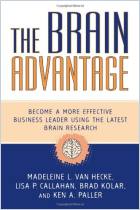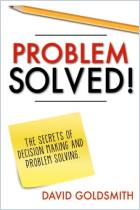Únase a getAbstract para acceder al resumen.

Únase a getAbstract para acceder al resumen.
Gleb Tsipursky
Never Go with Your Gut
How Pioneering Leaders Make the Best Decisions and Avoid Business Disasters
Career Press, 2019
¿De qué se trata?
Your gut can get lead you astray in business. Learn to identify your biases and to make better decisions.
Recommendation
Many experts tout the benefits of using your instincts in business. But behavioral economist and Disaster Avoidance Experts CEO Gleb Tsipursky disagrees. You can make better decisions without tapping your instincts, he says, because – regardless of the decision – cognitive biases get in the way. To help you reach better-informed decisions, Tsipursky has compiled a menu of mental biases, as well as methods to counter those judgment errors, most of which will already be familiar. While Tsipursky’s prose is repetitive at times, it hammers home the steps required to combat human mental shortcuts.
Summary
About the Author
Former Ohio State University professor Gleb Tsipursky is an author, speaker and CEO of Disaster Avoidance Experts, a management consultancy.





















Comment on this summary